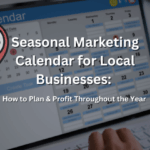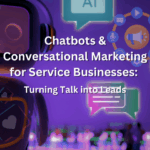Is your automated email campaign not giving you the amount of engagement you hoped for?
Do you want more of your subscribers answering your emails?
Have you created an ‘email marketing machine’ only to be disappointed at the results?
We’re going to take a very critical look at the subject of automation, communication and emails.
An Email Marketing Utopia
There is no denying that automated email campaigns are a wonder and save marketers hours upon hours of tedious manual emailing.
Email platforms like Mailchimp, Mailjet, Sendgrid and others offer fantastic features. A-B split testing, segmentation (organizing your email recipients into particular groups), analytics, and more. With a click of a button you can blast out ‘flash sales’ to your lists, or have every new subscriber receive a series of carefully crafted emails. Absolute perfection. It almost seems too good to be true. You can just set your entire email marketing campaign on ‘automatic’ and move on.
But can you? Is there any catch? Is this the best way to handle your email marketing?
Is the time we are saving by having such automation in place giving us back the amount of revenue that we would have made if we had NOT had the automation in place.
In other words, does the amount of time saved and revenue created by automation best the amount of time spent and revenue created by MANUAL email marketing?
Are we saving time with automation, but actually losing money by removing the human factor?
But before we dive in, let’s make sure we’re all on the same page.
Purpose
To make sure we’re all on the same page, we will assume we are all doing email marketing for the simple reason of exchanging a quality product/service with our subscriber, giving them useful information, and then getting revenue back in return.
Therefore, when doing marketing we are expecting results, in the form of opens, clicks, buys and responses. And by that we can measure the viability of our email marketing campaign.
We need to measure when the subscriber:
- Opens the message
- Clicks on the CTA
- Arrives on the landing page and buys
- Responds back to us
Now that we are all clear on what we want when we email our subscribers let’s examine the type of communication which is best suited to achieve those results.
The Human Factor
The human factor is absolutely essential in sales. Sales is a conversation between human beings. It is completely empirical that if someone looks at your billboard and reads the message, they are less likely to buy, than if someone had a conversation with one of your sales associates.
You can argue that ‘billboards, fliers and other media like that are to generate awareness and not close people’, but this does not change the fact that direct communication from two human beings is the most effective way to sell.
And as we agreed in the last section, we are doing email marketing to SELL; not to simply raise awareness and let people know we exist. You CAN do email marketing for just an awareness campaign, but you must knowingly be using it for that, and not expect revenue directly from it.
With that said, is email the same as a billboard or flier? Something that you just send out to thousands of people, generally, with no personal, human touch?
Or is email purely a human-only medium, crafted on a person by person basis and something you should never email out to the ‘masses’ with automated messages?
The Confusion
So, what do we do? ONLY send personally crafted messages to our list? Or ONLY send automated flash sale emails?
The answer is neither!
Email Marketing can be used for both.
The question is: When do we automate, and when do we not automate? And we cover that in our next article.






